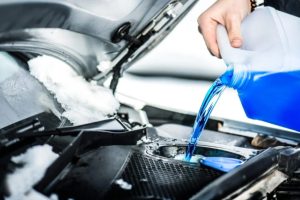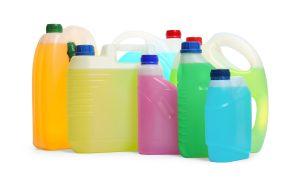Coolant, also known as antifreeze, plays a critical role in regulating engine temperature and protecting internal components from corrosion and thermal stress. The type of coolant you choose directly affects radiator performance, cooling efficiency, and engine longevity. With multiple formulations on the market — IAT, OAT, HOAT, and newer hybrids — understanding the differences is key to maintaining your cooling system.
This guide will help you understand coolant types, how they interact with radiator materials, and when to change or upgrade.
Why Coolant Type Matters

Coolants are more than just colored liquids. Each type contains specific chemical additives that:
-
Prevent overheating
-
Protect against corrosion
-
Lubricate the water pump
-
Resist freezing and boiling
Using the wrong coolant can lead to sludge buildup, corrosion, and poor heat transfer — all of which impair radiator function and may cause engine failure.
Main Types of Engine Coolants
Coolants are primarily categorized by their additive technologies. Below is a breakdown of the most common types:
| Coolant Type | Additive Technology | Color | Service Life | Key Features |
|---|---|---|---|---|
| IAT (Inorganic Acid Technology) | Silicates & phosphates | Green | 2–3 years / 30,000–50,000 km | Traditional coolant for older vehicles |
| OAT (Organic Acid Technology) | Organic carboxylates | Orange, red, dark green | 5 years / 150,000+ km | Used in modern vehicles; long life |
| HOAT (Hybrid Organic Acid Tech) | Silicates + organic acids | Yellow, turquoise, pink | 5 years / 150,000+ km | Combines benefits of IAT and OAT |
| P-OAT / Si-OAT (Phosphate- or Silicate-Enhanced OAT) | Regional variants | Blue, purple | 10+ years (newest vehicles) | Used in Japanese/European cars |
| Universal Coolants | Mixed formulations | Varies | Varies | May be compatible with many systems, but check carefully |
Compatibility with Radiators
Different coolant types interact differently with radiator materials. Here’s how they align:
| Radiator Material | Best Coolant Types | Notes |
|---|---|---|
| Aluminum | OAT, HOAT, P-OAT | Avoid high-phosphate IAT coolants to reduce corrosion risk |
| Copper/Brass | IAT | Common in older vehicles |
| Plastic-Aluminum Combo | OAT, HOAT | Most modern radiators |
How Coolant Affects Radiator Performance
1. Heat Transfer Efficiency
Coolant’s main role is to absorb engine heat and release it via the radiator. Degraded or incorrect coolant reduces heat transfer, raising engine temperatures.
2. Corrosion Protection
Quality coolant creates a protective film on metal surfaces, reducing rust and electrolysis. Without the correct formulation, corrosion may eat through the radiator core or heater matrix.
3. Scale and Deposit Prevention
Modern coolants are engineered to resist scale buildup, which can clog radiator fins and restrict coolant flow.
4. Freezing/Boiling Point Elevation
Properly mixed coolant typically protects down to -35°C and up to 135°C (with pressure). This stability is essential for extreme climates.
Signs You’re Using the Wrong Coolant
Using an incompatible or worn-out coolant can cause:
-
Sludge or gel in expansion tank
-
Sweet or burnt smell from radiator cap
-
White or rusty deposits in the radiator
-
Poor heater performance
-
Rising temperature gauge despite coolant levels
Tip: Always refer to your owner’s manual or consult a mechanic before switching types.
Coolant Maintenance Tips
To maintain optimal radiator and engine performance:
Use the Correct Coolant Mix
Most coolants must be mixed 50/50 with distilled water unless pre-diluted. Using tap water may introduce minerals and reduce cooling system life.
Replace Coolant Regularly
Even long-life coolants degrade. Flush and refill intervals vary:
| Coolant Type | Suggested Replacement |
|---|---|
| IAT | Every 2–3 years or 50,000 km |
| OAT / HOAT | Every 5 years or 150,000 km |
| P-OAT / Si-OAT | Up to 10 years (check OEM) |
Don’t Mix Incompatible Types
Mixing IAT with OAT or HOAT may result in sludge or reduced protection. If unsure, fully flush the system before changing coolant types.
Coolant Colors — Do They Matter?

Coolant color is not a reliable indicator of compatibility. Manufacturers use dyes for identification, but two coolants of the same color can have different chemistries.
| Color | Commonly Associated Coolant Type |
|---|---|
| Green | IAT |
| Orange | OAT |
| Yellow | HOAT |
| Blue | Si-OAT (Asian cars) |
| Pink | HOAT or Si-OAT |
| Red | OAT (GM / Toyota variants) |
| Purple | P-OAT (VW / Audi) |
Always check the label — never rely on color alone.
Upgrading Your Coolant and Radiator System
If you’re upgrading your radiator (e.g., from copper to aluminum), it’s wise to also:
-
Flush old coolant completely
-
Install compatible hoses and clamps
-
Use corrosion-resistant coolant additives if required
-
Switch to long-life or high-performance coolant
Looking for quality coolant and radiator components?
Buy Radiator & Components online — browse top-grade radiators, caps, coolant hoses, overflow tanks, and more to keep your cooling system at peak performance.
Final Thoughts
The right coolant is just as vital as oil or fuel when it comes to engine health. Choosing a coolant compatible with your radiator and engine design ensures optimal heat dissipation, corrosion resistance, and long-term performance.
Always stick to your vehicle manufacturer’s recommendations, avoid mixing incompatible types, and flush your system as needed. A well-maintained coolant system isn’t just about comfort — it’s about preventing engine failure and saving money.
Whether you drive a modern EV or a classic diesel, keeping your radiator supported by the correct coolant type is a non-negotiable part of preventive maintenance.